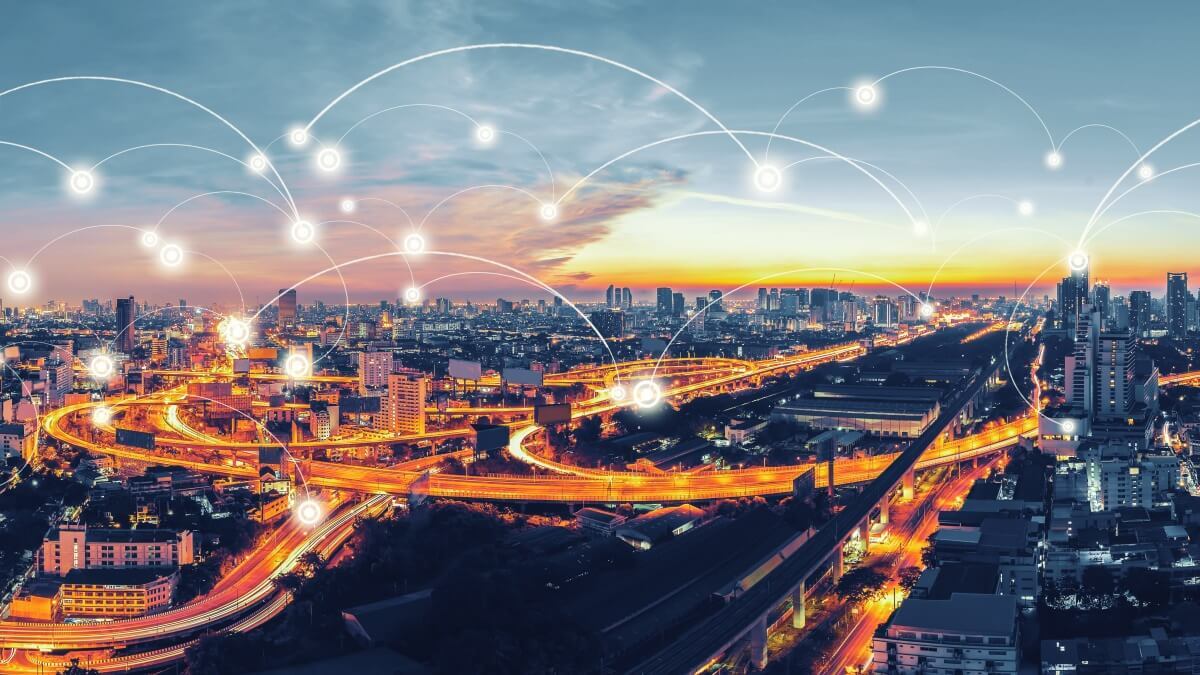Overview
5G and Edge computing are interlinked, with both technologies positioned to significantly improve application performance and enable vast quantities of data to be processed in real-time.
It sounds contradictory, with one being an almost closed data storage and analysis point and the other always online, but 5G and the Edge are interlinked in a way that can significantly improve application performance.
5G can dramatically increase network speed compared to 4G, while Edge computing reduces latency by bringing compute capabilities closer to end-users, ultimately making them more accessible.
This article explores how Edge computing and 5G are complementary technologies that stand to benefit each other.
What is 5G?
To see how 5G and Edge computing work together, it’s essential to understand 5G.
5G is the fifth generation of mobile networks and wireless technology.
Following on from 4G, which introduced faster data transfer rates and minimized video buffering, 5G aims to enhance several aspects that make each mobile network generation unique.
This includes improved capabilities for calls and texts, better network speeds for the ever-growing smartphone industry, and connecting everyone, everywhere across the globe.
5G is faster, has fewer loading time delays, and has more data capacity than any other generation before. It’s the reliable upgrade from 4G that can and will improve many industries, such as healthcare, logistics, and agriculture.
The 5G go-slow cycle
The 5G go-slow cycle is a fairly complex issue within globalized technology.
Ultimately, it refers to the slow roll-out and introduction of 5G networks worldwide and the gradual adoption of 5G into devices that people use daily.
The development of 5G standards, as well as releases and availability, are staggered across areas where 5G is being introduced. In some countries, such as Austria, investing in 5G was delayed due to COVID-19.
Everyone wants to avoid a repeat of the somewhat underwhelming introduction of 3G and the financial strain that 4G put on the industry.
Unfortunately, the social reaction to 5G has not been entirely positive due to these past hiccups, hence the delayed approach towards releasing the entire network.
Operators in the US, China, Japan, and Korea are enthusiastic about 5G, but the slow roll-out is in effect in many other countries for financial or social reasons.
The close connection between 5G and Edge Computing
But how does all this talk about 5G relate to Edge Computing?
Well, when 5G first started gaining popularity, scientists set some incredibly high standards for the new technology regarding how much it would reduce latency.
While telecom operators report that 5G in the lab can deliver network speeds more than twenty times faster than 4G, this isn’t reflected in the average user’s experience. Well, at least not with 5G alone.
This is where Edge computing comes in, with experts predicting that 5G will need to rely on Edge computing to reach these impressive targets.
By installing data processing for 5G on the Edge, there is a significant reduction in the time it takes to process data.
Edge Computing, operating at the network’s edge, stores all its data locally and doesn’t need to interact with the cloud. It has set commands for the jobs it needs to perform.
Data is processed in real-time by putting 5G data processing on the Edge of the network. Additionally, the security advantage that the Edge offers gives the 5G network further protection from hackers and technological mishaps, as it is not connected to the broader network.
Furthermore, with the slow-go cycle that 5G operators are taking, the Edge is key to ensuring that coverage reaches all necessary locations sooner.
Full 5G won’t be sufficient to cover everything on its own, but with Edge Computing, it can communicate effectively with whatever application and appliances it’s connected to.
Using the cloud for such work will quickly become expensive, not to mention slower. As a result, consumer experience will deteriorate, and 5G will not be able to handle processing responsibilities using the cloud alone.
Having the entire system travel through local Edge networks, where the information can be picked apart and rationalized before it’s sent to a centralized cloud, vastly improves the processing procedure.
This further incentivizes application creators to use the new 5G network, thus allowing it to grow alongside Edge Computing.
End-users benefit from Edge Computing and 5G
There aren’t many benefits consumers don’t get when Edge Computing and the 5G network combine.
5G’s overall goal is to provide significantly improved service quality across all aspects and lower latency.
By working with Edge Computing, 5G can provide faster data transmission within devices and applications. For example, the future of self-driving and navigating cars will rely on this relationship.
By having Edge computing process data through its local network and then report all necessary information to the 5G network, self-driving and navigating cars receive that information within ten milliseconds. Without Edge Computing and instead using the cloud, that delay can be up to eighty milliseconds – a non-viable amount when working with modern data transmission.
Edge Computing allows 5G to fill these sub-millisecond requirements, allowing 5G to function with the intended low latency.
Furthermore, 5G works alongside the Internet of Things (IoT), a key aspect of Edge Computing. This connection brings the Edge closer to consumers than ever, with local processing happening within their own devices, then sent to the 5G network or the cloud.
It works the same for industries too!
Using Edge computing, manufacturers and individual HomeCam users can keep all their data processing in-house (literally). On top of this, users can have their devices working faster than ever thanks to Edge computing working in tandem with 5G.
Edge computing and 5G are at the forefront of a new technological world
Together, Edge Computing and 5G reduce device latency and connect things that have never previously interacted.
For end-users, this makes Edge computing and 5G a winning team.
So, once the slow-go cycle is complete (aided, of course, by Edge computing), prepare for a new, faster technological world.



